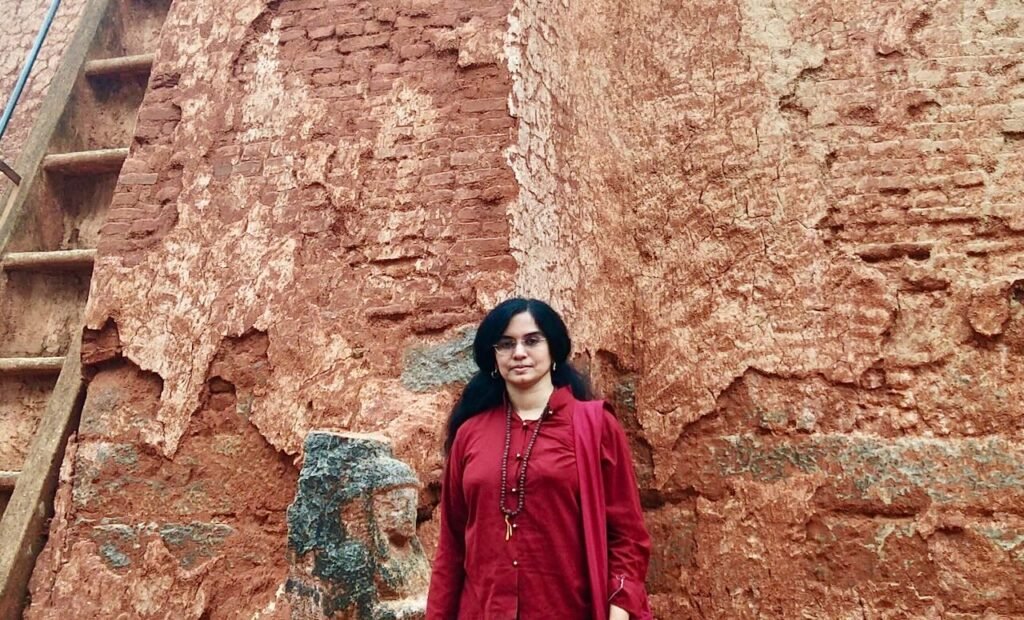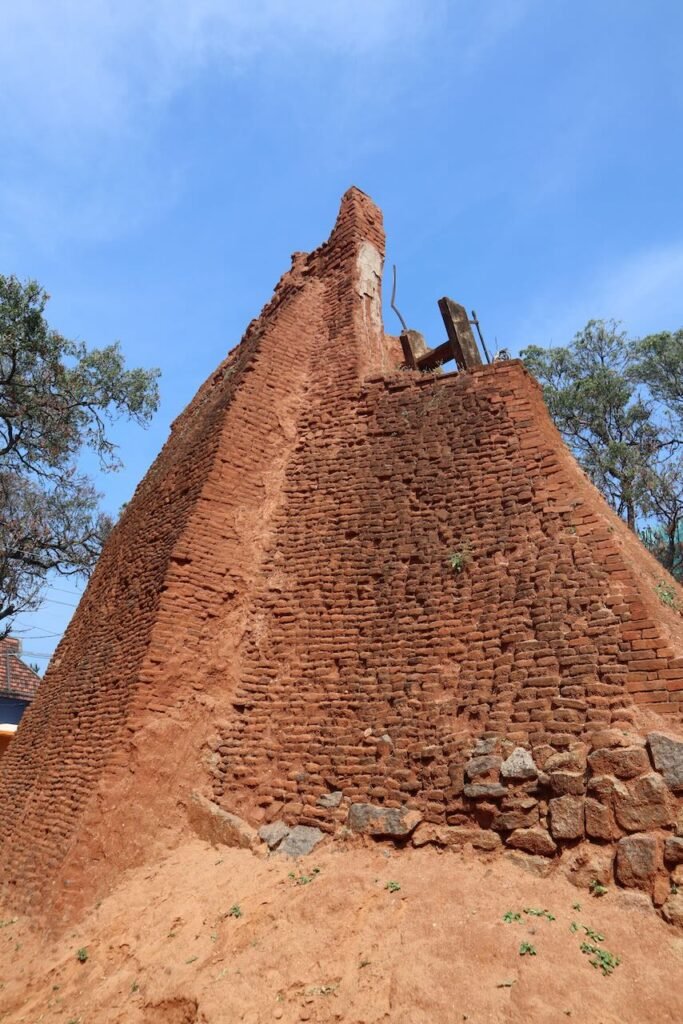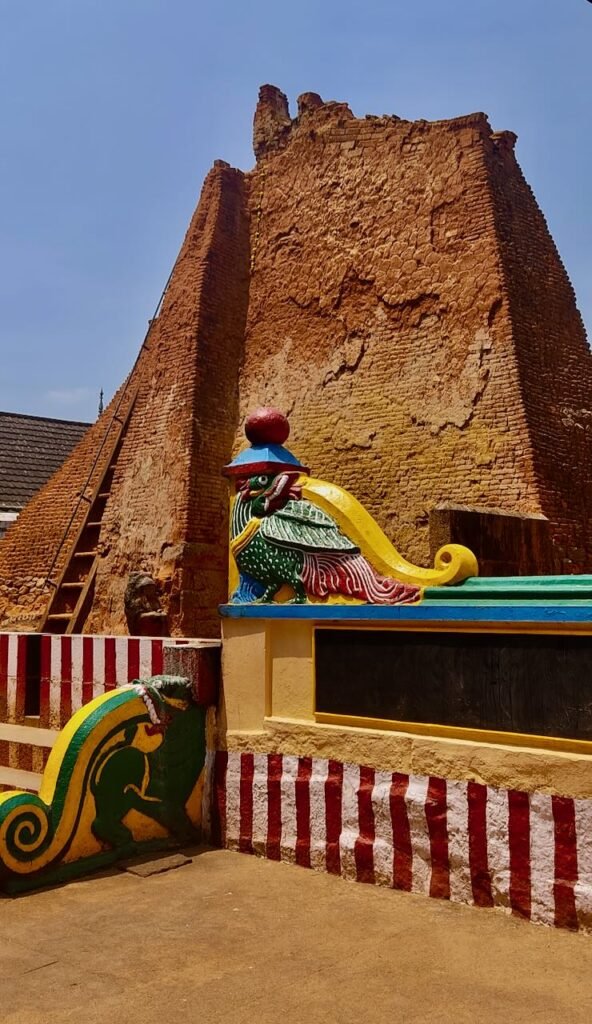Putheri (Buddheri) – The Southern most Stupa of Ancient India

An ancient Buddhist Stupa is found in Putheri, a tranquil village close to the southernmost tip of India. Putheri is on the outskirts of Nagercoil city in the Kanyakumari district of Tamil Nadu. This Stupa is of special importance as it is the southernmost Buddhist Stupa ever found in India. It is just 20 km from the cape of Kanyakumari, where the Arabian Sea and the Bay of Bengal meet the Indian Ocean. Given the geographical importance of the location, it is highly likely that it is one of the thousands of Stupas built by Ashoka with the relics of the Buddha.
What remains now of the Stupa is a towering pyramidal brick structure around 7 meters high in a dilapidated state. In front of the Stupa, embedded in it, is a worn-out stone statue in a standing posture, holding an alms bowl. The figure may be of the Buddha. It is about 3 ft in height. The ushnisha part of the statue is worn-out, but the long ears, curly hair, robes, etc., are visible. The shape of the alms bowl held by two hands also is evident. This statue appears to be a fragment from an earlier structure, such as a stone relief or a pillar.


Presently, villagers do not recognize this structure as a stupa. They imagine it to be an unusually large termite mound, called in the local language as puttu/ putru ( புற்று / പുറ്റ് ). So, they worship this as a sacred place of Nagas. However, the brick structure of the Stupa is quite evident, and it is not a termite mound. The place name Putheri (புத்தேரி / പുത്തേരി) is derived from Buddheri (Buddhar Cheri), meaning, a place of the Buddha. It is to be noted that in Tamil, Buddhar is spelt as Puthar (புத்தர் / പുത്തർ). But, the villagers consider the name to be derived from ‘puttu’ (புற்று).
This type of pyramidal Stupa construction was popular in the 11th century CE in Myanmar. There is also such a pyramidal Stupa recently discovered in Nateshwar, Bengal, dated to around the 10th/ 11th century. So the outer structure of the Stupa, which is visible today, was most probably built in the 10th /11th century CE. However, there may be inner layers that are older than this, as it was a typical practice to build outer layers to enlarge Stupas from time to time. Proper archeological studies are required to investigate whether there are inner structures that go back to the period of Asokan stupas.





This towering Stupa remained a witness to the waves of political and religious changes that swept the land for over a thousand years. Ay, Chera, Chola, and Pandya kingdoms at various points in time, ruled this land. Sramana systems such as Buddhism and Jainism flourished in that area in the ancient days. But as Buddhism disappeared from the land, this Stupa was also abandoned and forgotten.
The villagers have been seeing this Stupa for generations. Since they were unsure what this was, various legends and interpretations arose. According to a popular legend, a mendicant yogi happened to reach the village on his wandering trail. He started doing penance near the termite mound and attracted some followers. The villagers say that during his final days, the mendicant climbed to the top of the structure (Stupa) and passed away in meditation there. Due to this legend, the structure is also regarded as the samadhi place of that yogi. So it is also known as the Yogeeshwarar Temple. According to the villagers, the shape of the broken top of the structure resembles a yogi lying in samadhi.
Currently, a ladder is fixed to climb to the top of the Stupa. However, since only the temple priest is allowed to climb the ladder, we could not observe the top of the Stupa.
There is an interesting ritual as part of the annual festival there. Every April, they plaster red mud all around the Stupa and make it look similar to a termite mound (puttu). They also make some forms resembling nagas on that mud plaster. During the festival, some wet mud is also offered as prasad (blessed substance), which is believed to have healing powers. Later, during the monsoon rains, the mud plaster is washed away, and the brick structure of the Stupa is visible again.


- Putheri (Buddheri) – The Southern most Stupa of Ancient India - January 19, 2023
- History of Buddhism in Kerala - January 12, 2022
- Buddhism in Kallakurichi, Tamil Nadu - March 4, 2021


I wish to make contact so as to know more about Buddhists in KK. District.
Sure. You can contact us at the email given on the web pag https://www.wayofbodhi.org/yogi-prabodha-jnana/ and https://www.wayofbodhi.org/yogini-abhaya-devi/
Very Important and vital information, it will guide to study Buddha literature and understanding the history of this region